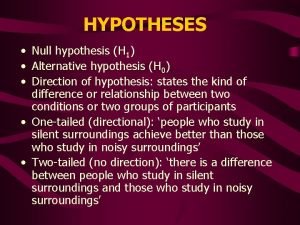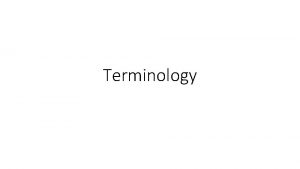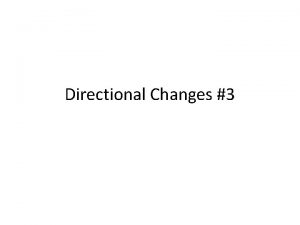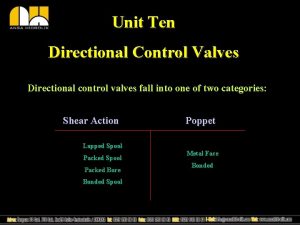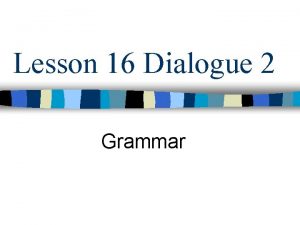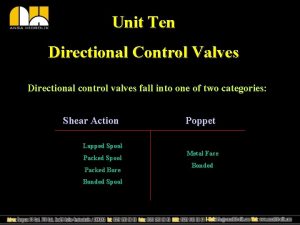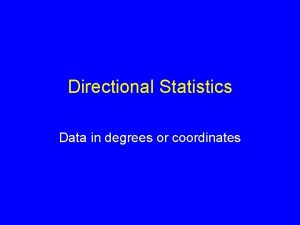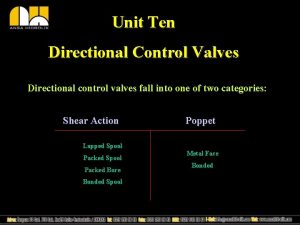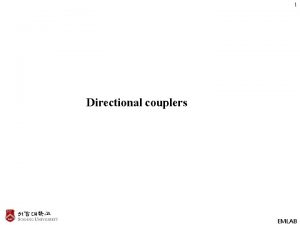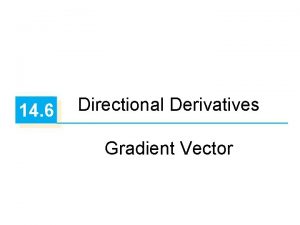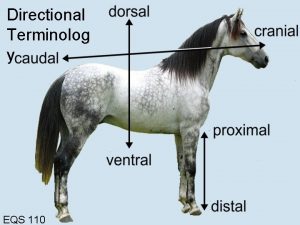Notes Directional Terms pg 8 Notes Directional Terms


















- Slides: 18

Notes: Directional Terms (pg 8)

Notes: Directional Terms (pg 8) Anatomical Position: Standing upright, face and feet forward, arms at sides with palms facing forward

Body Cavities • Dorsal cavity: Contains brain and spinal cord

Body Cavities • Dorsal cavity: Contains brain and spinal cord • Ventral cavity: Contains thoracic (chest) cavity and abdominal cavity

Directions in the Body • Superior = Above (closer • Inferior = Below (closer to the head) to the feet)

Directions in the Body • Superior = Above (closer • Inferior = Below (closer to the head) to the feet) • Anterior = toward the • Posterior = toward the front (ventral) back (dorsal)

Directions in the Body • Superior = Above (closer • Inferior = Below (closer to the head) to the feet) • Anterior = toward the • Posterior = toward the front (ventral) back (dorsal) • Medial = near the • Lateral = near the side midline of the body

Directions in the Body • Superior = Above (closer to the head) • Anterior = toward the front (ventral) • Medial = near the midline of the body • Proximal = close to a point of attachment • Inferior = Below (closer to the feet) • Posterior = toward the back (dorsal) • Lateral = near the side of the body • Distal = far from a point of attachment

Directions in the Body • Superior = Above (closer to the head) • Anterior = toward the front (ventral) • Medial = near the midline of the body • Proximal = close to a point of attachment • Superficial = near the surface • Inferior = Below (closer to the feet) • Posterior = toward the back (dorsal) • Lateral = near the side of the body • Distal = far from a point of attachment • Deep = away from the surface

Using directional terms • Terms describe the position of a part relative to another part • Incorrect: The heart is superior • Correct: The heart is superior to the intestines

Partner Activity • One person will point to a body part. The other will say whether that part is: superior/inferior anterior/posterior lateral/medial Relative to the person’s eyes Then switch partners. Repeat for 5 body parts each

Output (pg 9) Describe the classroom using the directional terms (1 sentence per term) Example: The pencil sharpener is lateral to the desks

Planes (pg 8)

Planes • Sagittal plane: vertical plane that divides the body into right and left sides

Planes • Sagittal plane: vertical plane that divides the body into right and left sides • Transverse plane: horizontal plane that divides the body into superior and inferior portions (cross section)

Planes • Sagittal plane: vertical plane that divides the body into right and left sides • Transverse plane: horizontal plane that divides the body into superior and inferior portions (cross section) • Frontal (coronal) plane: vertical plane that divides the body into anterior and posterior portions


Activity • Use the modeling clay to sculpt a small elephant (each person makes their own) • When finished, call me over to your table and show me the sagittal, transverse, and frontal planes
 Directional vs non directional hypothesis
Directional vs non directional hypothesis Directional and non directional hypothesis
Directional and non directional hypothesis Directional and non directional hypothesis
Directional and non directional hypothesis What is directional and non directional hypothesis
What is directional and non directional hypothesis Directional and non directional hypothesis
Directional and non directional hypothesis General problem in research example
General problem in research example What is directional and non directional hypothesis
What is directional and non directional hypothesis Sheep brain cross section labeled
Sheep brain cross section labeled Transverese plane
Transverese plane Positional and directional terms
Positional and directional terms Directional terms - examples
Directional terms - examples Directional terms anatomy
Directional terms anatomy Positional and directional terms
Positional and directional terms Directional terms
Directional terms Body organization and terminology lab 2
Body organization and terminology lab 2 3 directional terms
3 directional terms Superior and inferior
Superior and inferior Regional term
Regional term Supine position
Supine position

